-
Car Reviews
- All reviews
- Midsize SUVs
- Small cars
- Utes
- Small SUVs
- Large SUVs
- Large cars
- Sports SUVs
- Sports cars
- Vans
Latest reviews
- Car News
-
Car Comparisons
Latest comparisons
- Chasing Deals
Mazda makes another skirmish into a premium arena with its new large SUV, but creating a fresh flagship comes at a cost
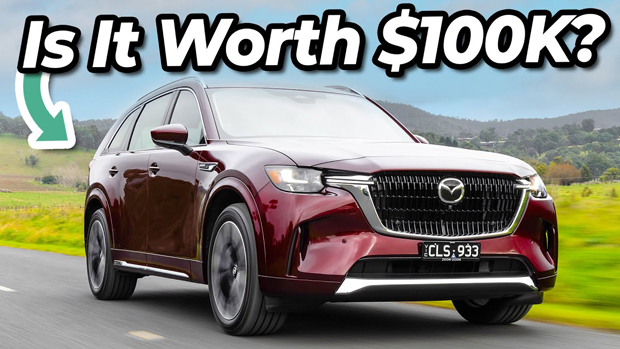
It’s fair to say Mazda is a little bit excited about the arrival of the CX-90.
Not only does the large SUV pioneer new segment territory for the brand with a completely new model addition to the family, it creates a new flagship and is only the second vehicle to use Mazda’s straight-six engine. There’s a lot riding on it.
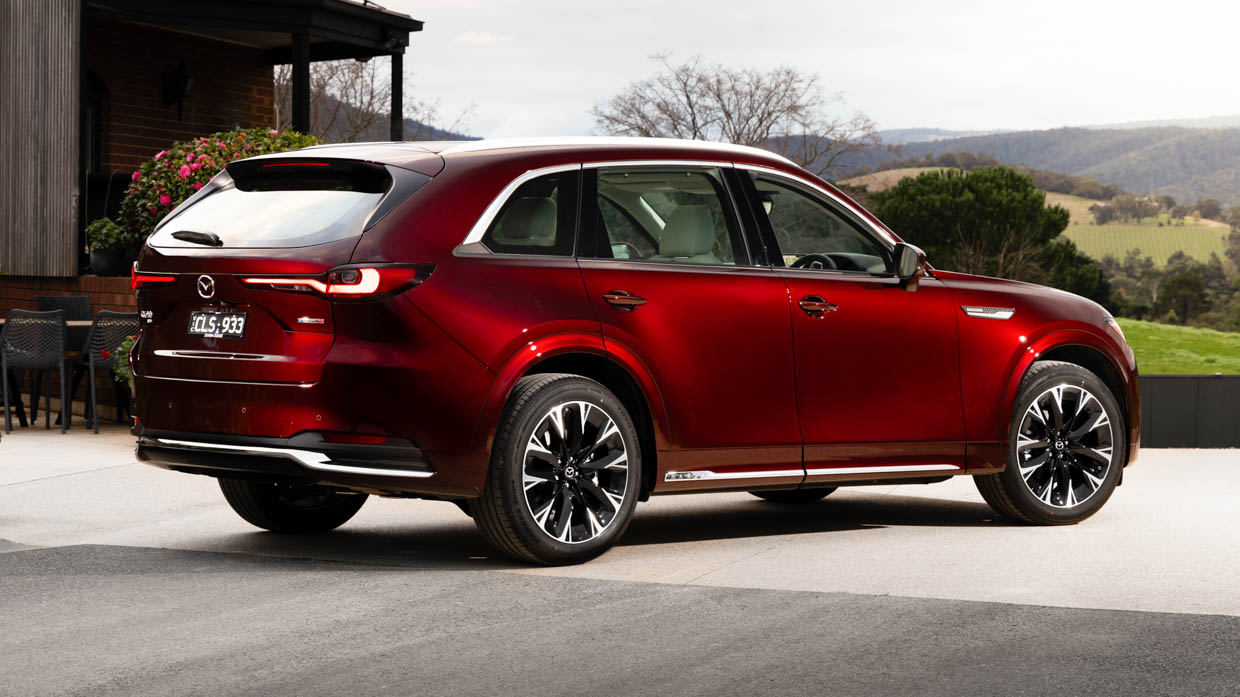
Given the significance of the CX-90, Mazda has made a big deal of its introduction with a long calendar of events previewing its eventual arrival in Australia.
Concepts were teased, technologies showcased, it launched overseas to much fanfare and there was even a pre-launch prototype drive on Australian turf.
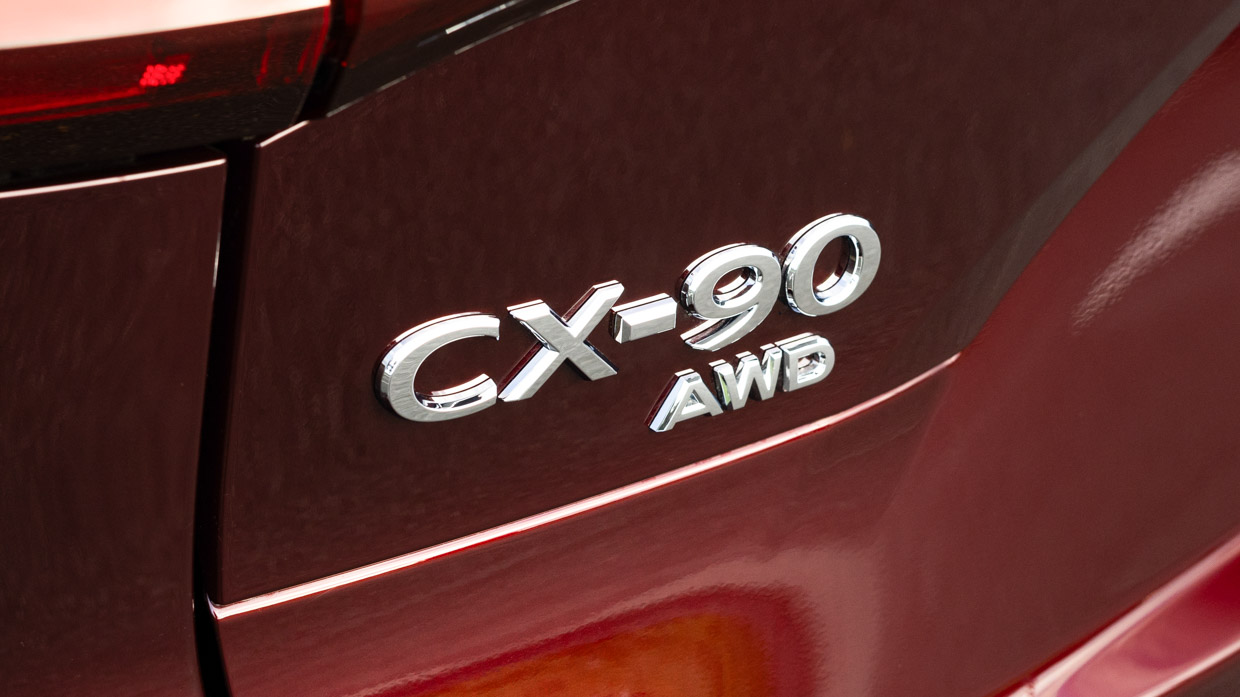
That preview on a private test track offered a tantalising glimpse at what the CX-90 would offer but now it’s here in the cold light of day (actually a very pleasant springy NSW day), and ready to show its true colours in Australian market specification and on public roads.
While most of the CX-90 alluring impressions remain from our pre-production drive, there are a handful that don’t stack up quite so well when tested out in the wild.
The 2023 Mazda CX-90 launches with a choice of two engines and in three different levels of specification with names borrowed from the CX-9 lineup.
At the most affordable end of the range, the Touring is available for $73,800, the GT represents the mid-pack priced from $84,555, while the Azami is the top-shelf variety for now costing $92,540.
In other brand’s ranges where both a diesel and petrol are on offer, the diesel is nearly always priced at a premium but the CX-90 bucks that trend.
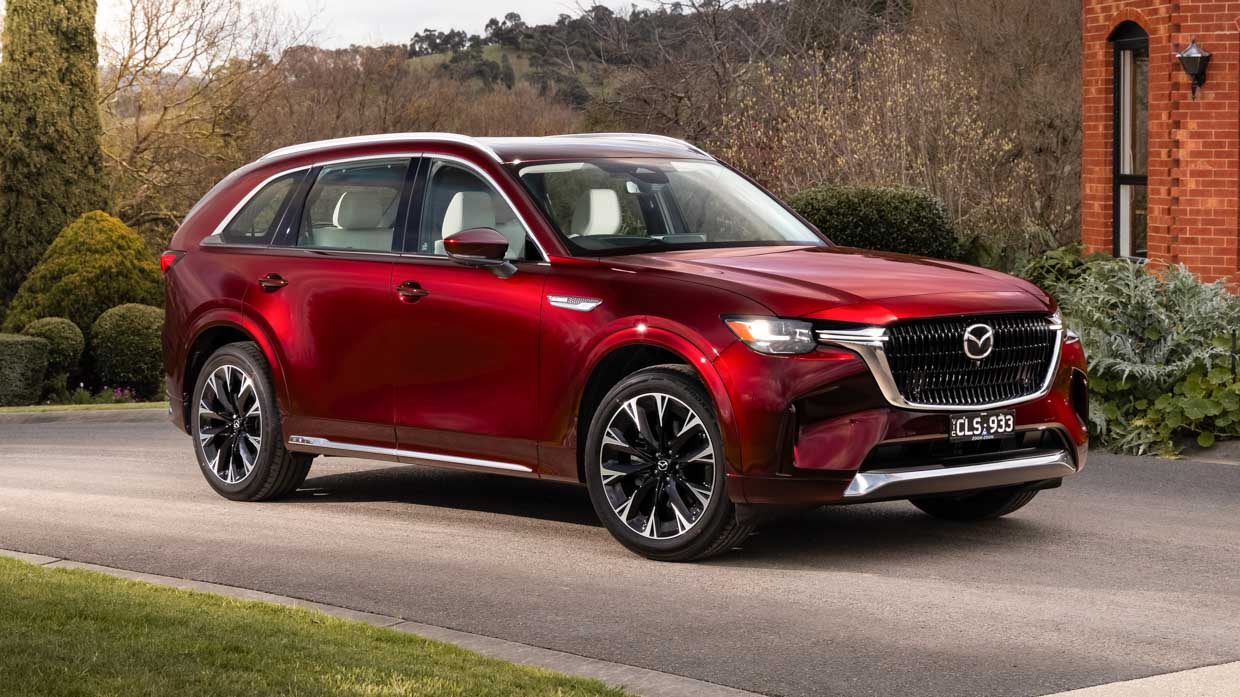
Pairing the diesel to the Touring and GT increases the price by $2000 and $245 respectively. However, when you get to the pointy end, it’s the petrol that’s most expensive, adding an extra $1115 over the cost of the Azami diesel.
This is due to the effect of Australia’s luxury car tax, which applies less of a loading to the more efficient diesel once it nudges over the LCT threshold.
As you might expect from any flagship model, even entry level versions of the CX-90 are fairly well equipped, with leather upholstery blended with patches of Maztex synthetic hide, electrically adjustable and heated front seats and generally good quality materials everywhere across the standard seven-seats.
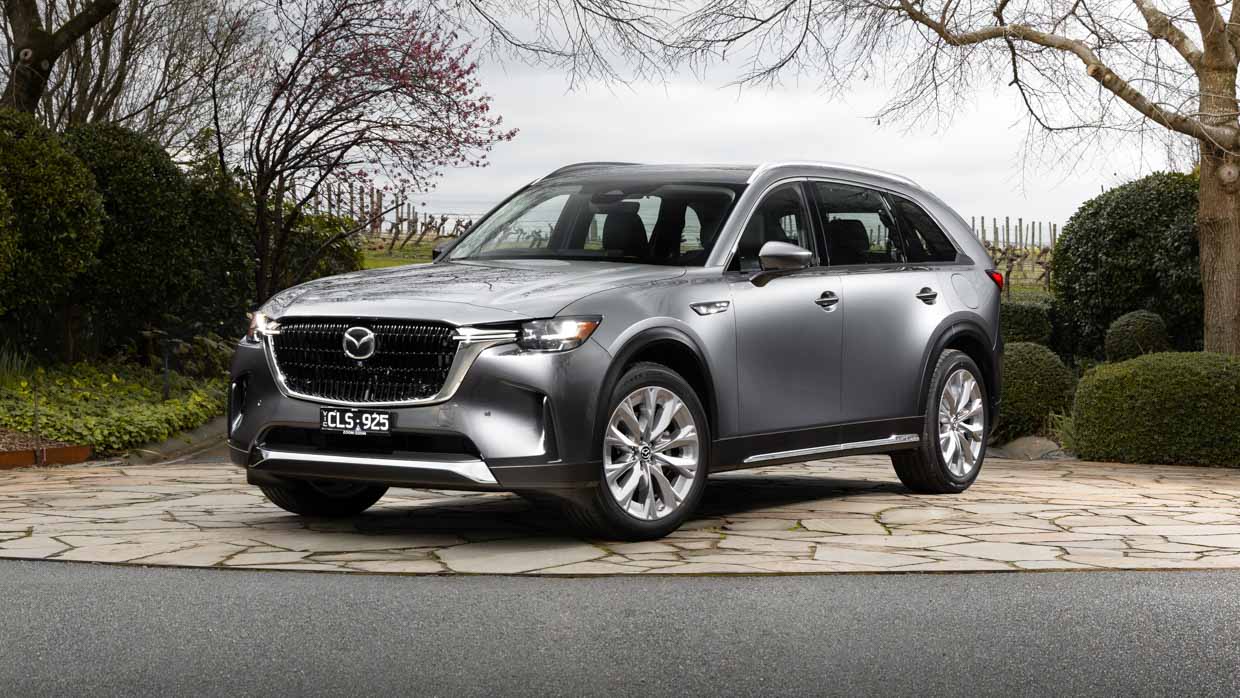
Pictured is the CX-90 GT grade
In terms of technology, buyers net a large 10.25-inch central touchscreen, LED headlights, keyless entry, 360-degree camera, three-zone climate control and wireless device charging to name just a few highlights. Plus, 19-inch wheels on the outside.
Stepping up to the GT adds a larger 12.3-inch centre screen, 12.3-inch fully digital instrument cluster, heaters for second-row seats, more leather on the door trims, a posh stereo, sunroof and 21-inch wheels.
At the top of the pack, the Azami adds to GT grade with finer quality leather, ambient cabin lighting, ventilated front seats, cool ‘transparent car’ parking camera, colour-coordinated wheel arch trims and a different design 21-inch wheel.
For those with deep pockets, a pair of optional interior design packages are on offer for the Azami for $6500 each ($1500 of which is LCT). The Takumi pack adds gorgeous white Nappa leather upholstery with a lovely matching textile and Kakenui stitching (yeah, we had to Google that too), while the SP treatment brings tan Nappa, a suede dash and two-tone steering wheel.
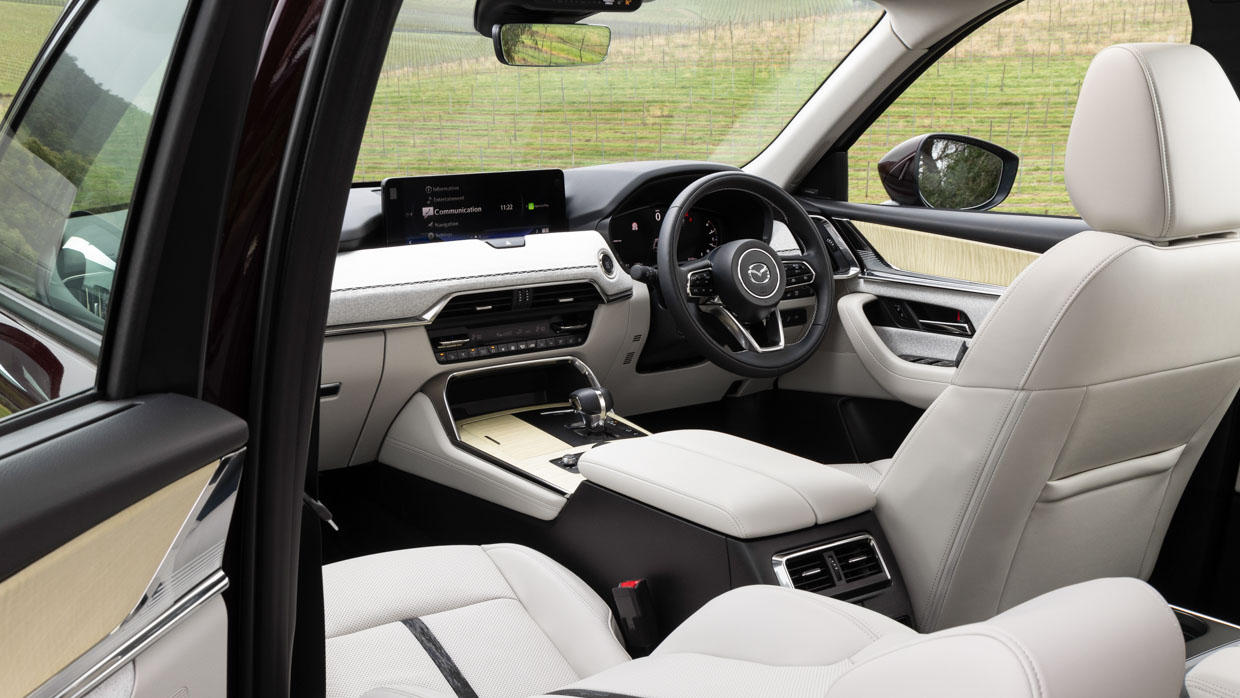
Both packs convert CX-90 to a six-seater, the second-row seating featuring a pair of more luxurious ‘captain’s chairs’ with heating and ventilation, plus a storage console between.
Gone are the days of Mazda’s no-cost lovely colours with $995 added to the bottom line for Soul Red, Rhodium White, Machine Grey or the signature Artisan Red, although Deep Crystal Blue, Jet Black, Sonic Silver and Platinum Quartz are included in the price.
Revera Stone leather is an option for the GT if you don’t like black for no extra cost.
After a quick blast in the pre-production CX-90 back in April, we already have a fair idea what the CX-90 has to offer the driver, but we only had a chance to sample the G50e e-Skyactiv G petrol engine.
This time we were able to put the petrol back-to-back with the D50e e-Skyactiv D diesel donk.
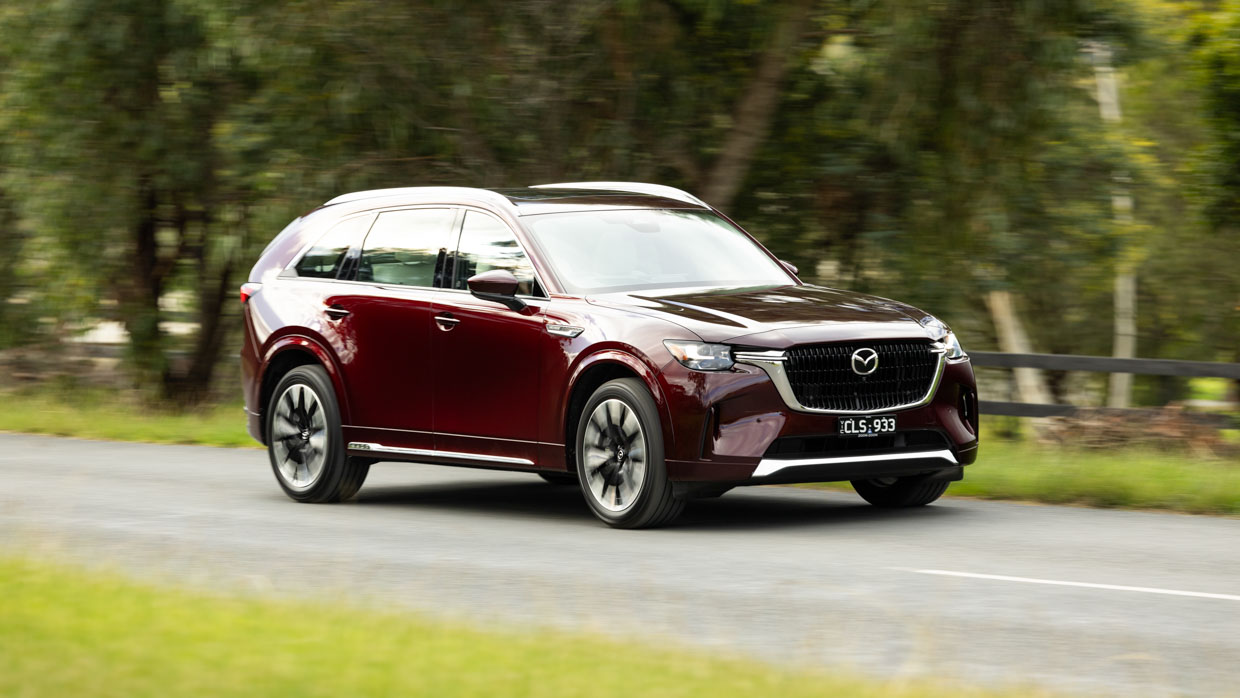
Impressively, much of the petrol’s likable attributes translate well into a diesel too. Smoothness is exceptionally good as straight-sixes are renowned, while the typical torque characteristics of a diesel are also present in abundance.
With 187kW and 550Nm on tap, the 3.3-litre engine makes light work of hauling the 2.2-tonne large SUV up to cruising speeds. It also does so with a pleasant report thanks to augmented sound piped in through the sound system.
According to Mazda CX-90 program manager Mitsuru Wakiie, the noise is synthetic but created using the diesel’s natural sound as the basis. Unlike too many other augmented engine sounds, the Mazda’s is convincing and complementary, not distracting, despite being one of the loudest we’ve experienced.
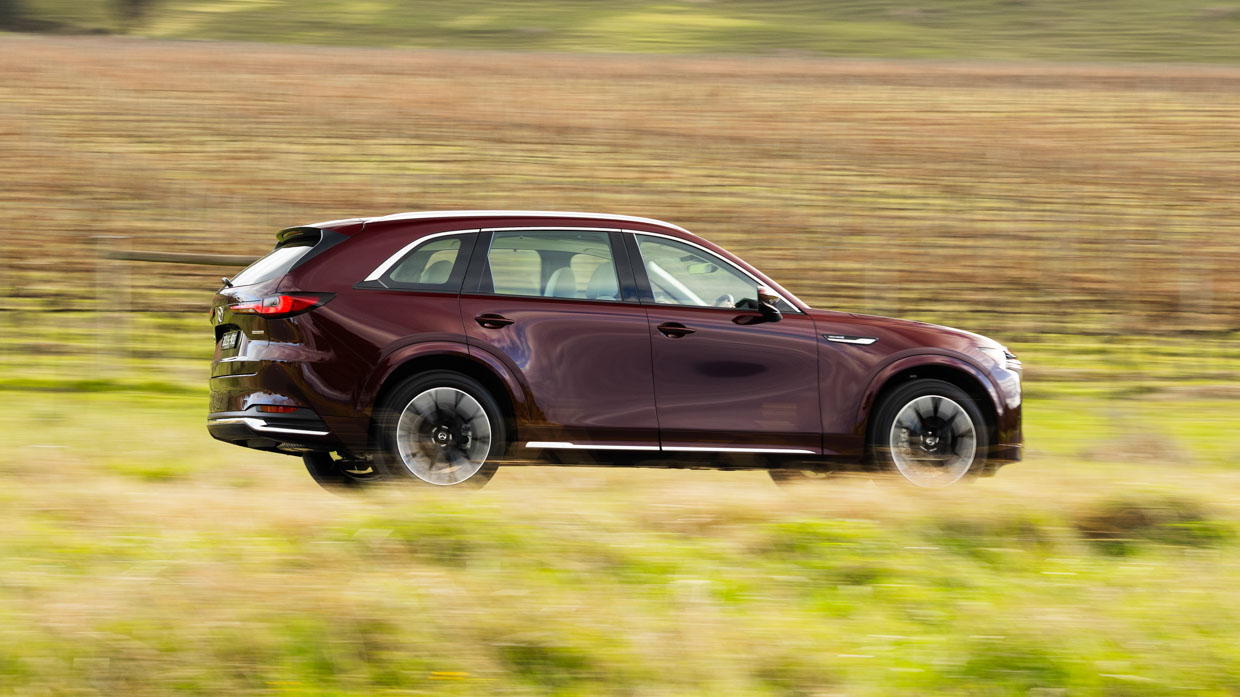
The effect of a 48-volt hybrid system is mild at best and contributes only a minimal amount of grunt to the perceptible acceleration with a noticeable delay between throttle application and the development of full power.
The responsive eight-speed automatic transmission does its best to fill the turbo lag and, once all the elements are working together, the diesel is impressively muscular and surprisingly revvy.
A firm brake pedal and sweet steering are other pleasant surprises that we hadn’t fully appreciated in the previous meeting and with more road and surface variety we really started to enjoy the sharp handling and commendable body control.
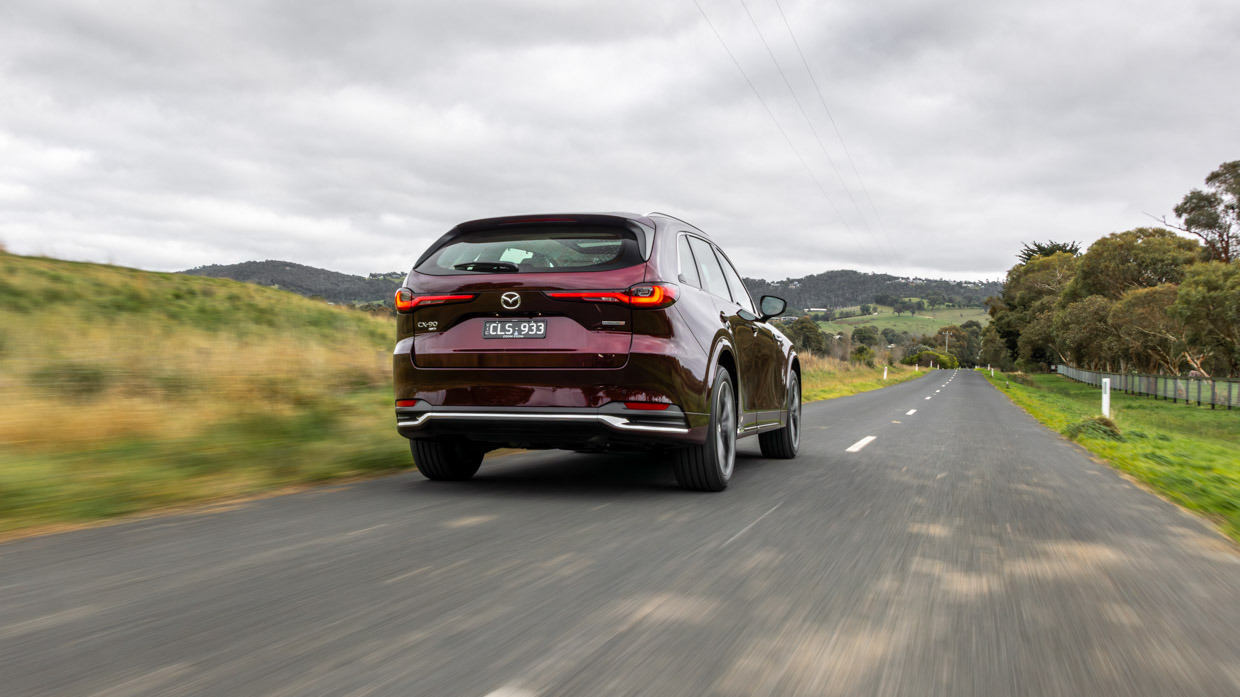
Unfortunately, the almost perfect drive scorecard is let down by a below-par ride with a suddenness when encountering surface imperfections such as repairs or minor damage.
The suspension tune is better at handling large bumps, but more frequent smaller imperfections produce a fussy nature and not the level of compliance we were expecting from such a luxury-focused model.
With such a smooth and relaxing character from the diesel/auto combination, the sharp ride is a mismatch that’s hard to warm to. However, some redemption comes from a swap to the petrol.
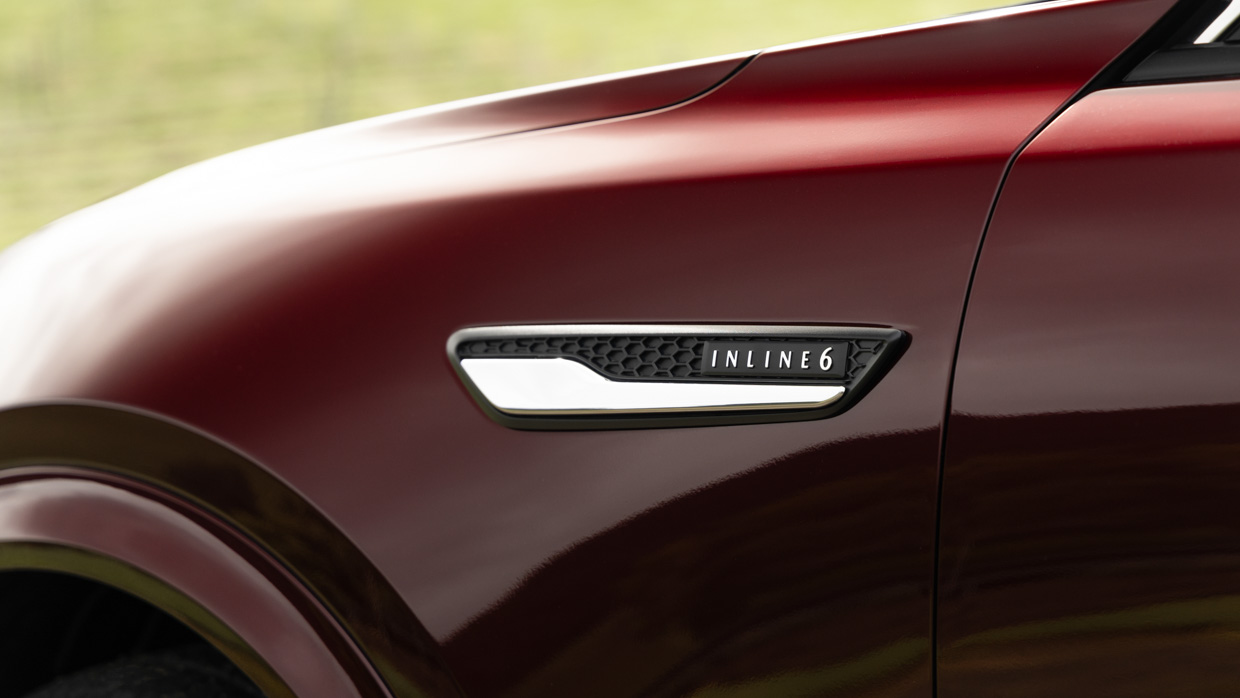
Also displacing 3.3 litres and with the same 48-volt electrified component, the G50e moves the power and torque split to 254kW and 500Nm, which might not look like a massive shift but it makes a big difference in practice.
With peak torque from just 2000 rpm, the petrol’s grunt is diesel-like and easy to access. However, rev through it to peak power at 6000 rpm (the diesel is done at 3750 rpm) and the G50e is hilariously fast with zero to 100km/h done in a claimed 6.9 seconds.
In fact, for performance-per-dollar there’s not a lot else that can do better than this, Mazda’s most powerful production car to date.
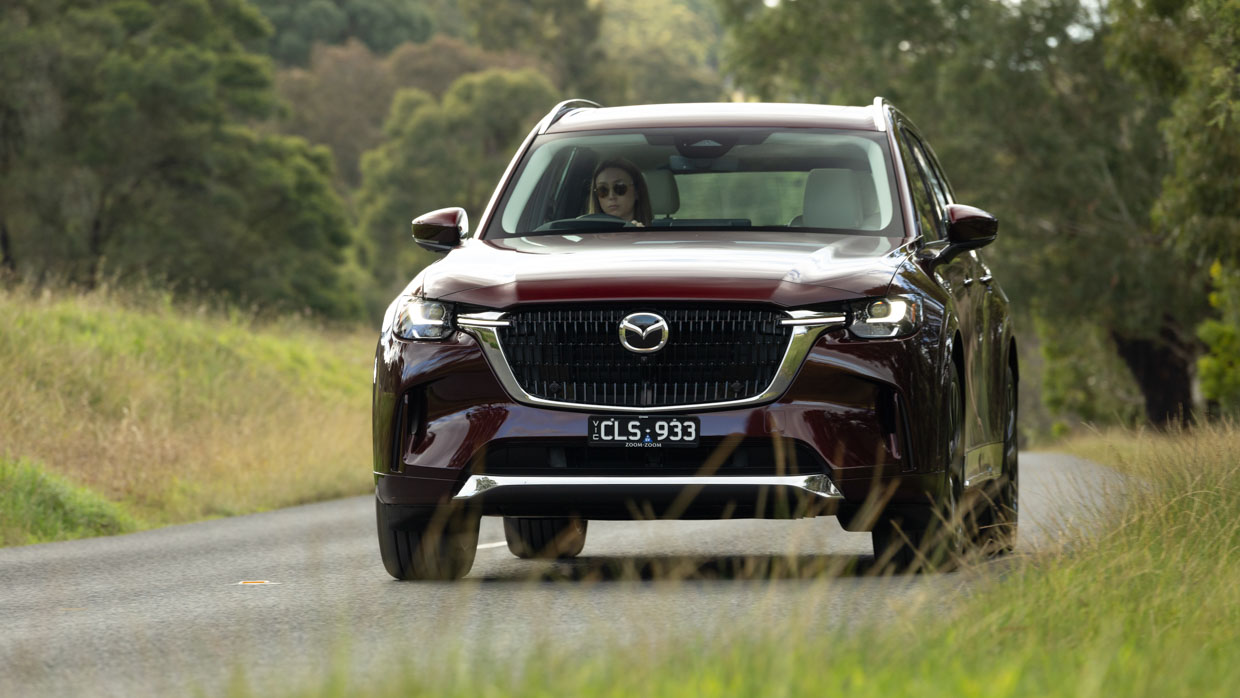
With genuinely sporty performance, the stiff ride is a more natural pairing and feels less like the CX-90 is trying to manage two polar opposite personalities. Put simply, until Mazda makes its adaptive-damper foray, the petrol makes more sense.
It too, sounds great and with less weight up front (Mazda won’t say what the distribution is but confirms the petrol is the closest to 50:50) the nose is more responsive and the chassis feels even lighter on its feet than the diesel version.
Towing applications might have levelled the playing field in favour of the diesel but, weirdly, the petrol wins here too with a maximum braked rating of 2500kg versus the 2000kg of the diesel.

Both sixes are beautiful pieces of engineering and the automotive world is a better place for them but the petrol in this application is the one that makes most sense.
As a final consideration, a quick blast in the Touring – which gets 19-inch wheels and lovely squashy, tall tyres – revealed a small improvement in compliance.
Positioned as the new flagship of the Mazda family, the CX-90 needs to be special in every way it can. Certainly its drivetrain is top-shelf and the pre-production cabin we experienced made the impression a hero model should.
However, achieving the same effect in the production version requires an Azami to be upgraded to either the SP pack (as was the pre-prod car) or the Takumi pack, resulting in a minimum spend of $99,040.
Mazda’s new golden child looks and feels expensive because it is.
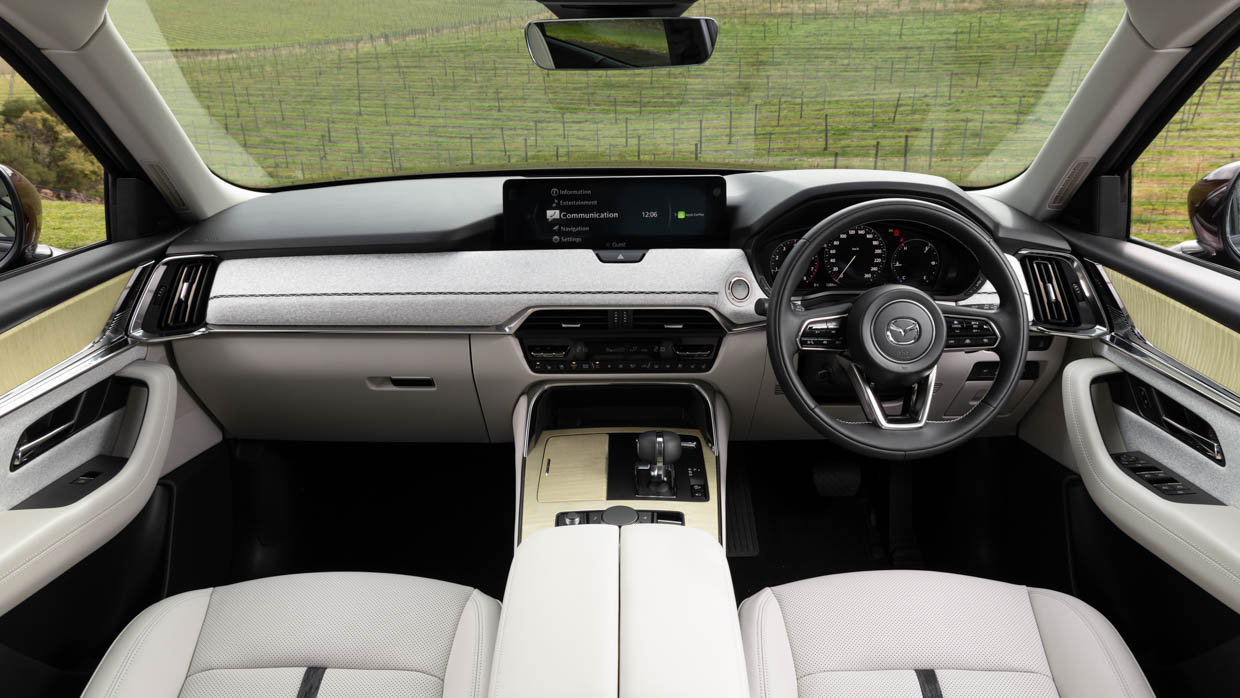
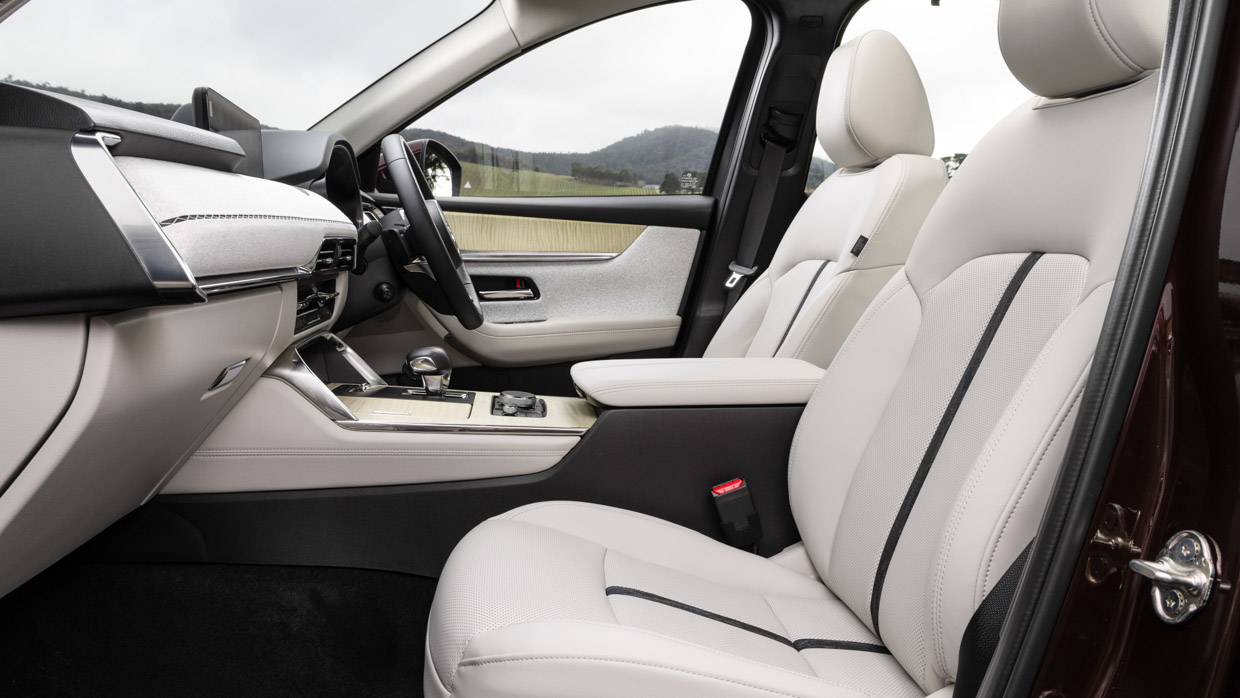
Leave these options out and the CX-90’s cabin still has a premium vibe, but simply feels like an upscaled version of a smaller SUV or passenger model.
This approach has worked well for previous models since the Mazda 3 embarked on a more premium path that its forebears, but offering a bigger version of something we’re already accustomed to isn’t quite going far enough for such a pivotal model.
If you can stretch to either of the optional interiors then you should because the Takumi’s white Nappa leather and maple veneer – that looks like a lock of flaxen hair – is absolutely stunning. Just make sure the kids leave their crayons at home.
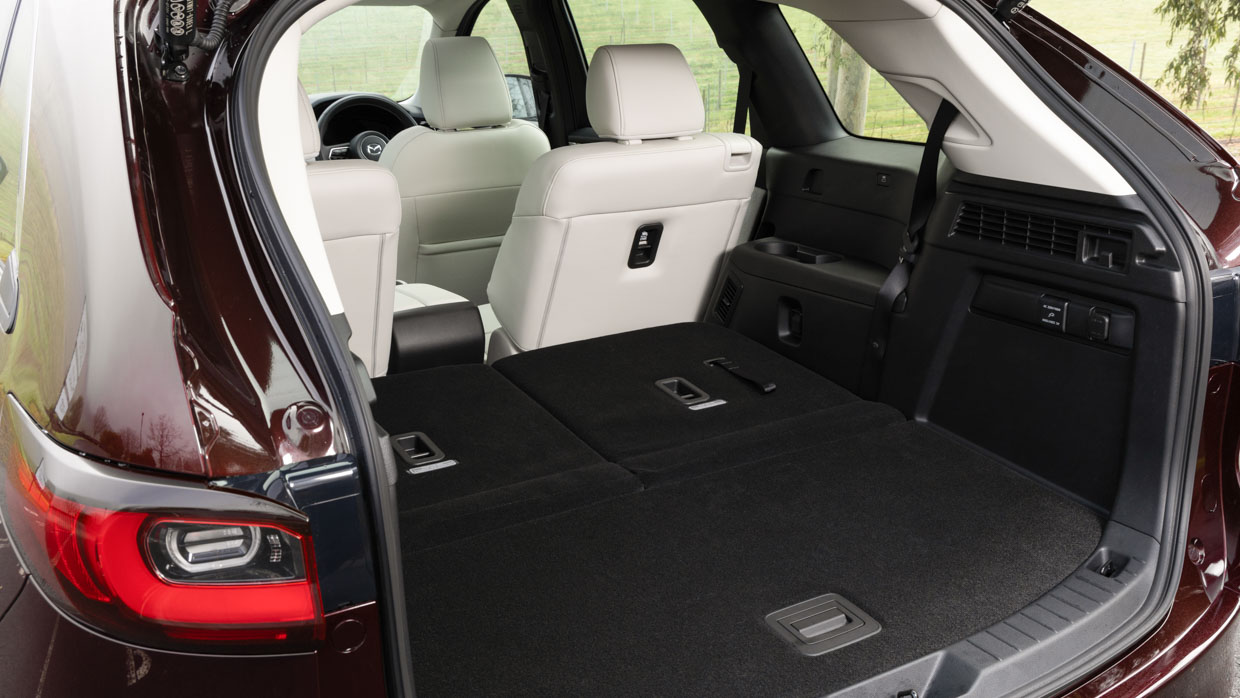
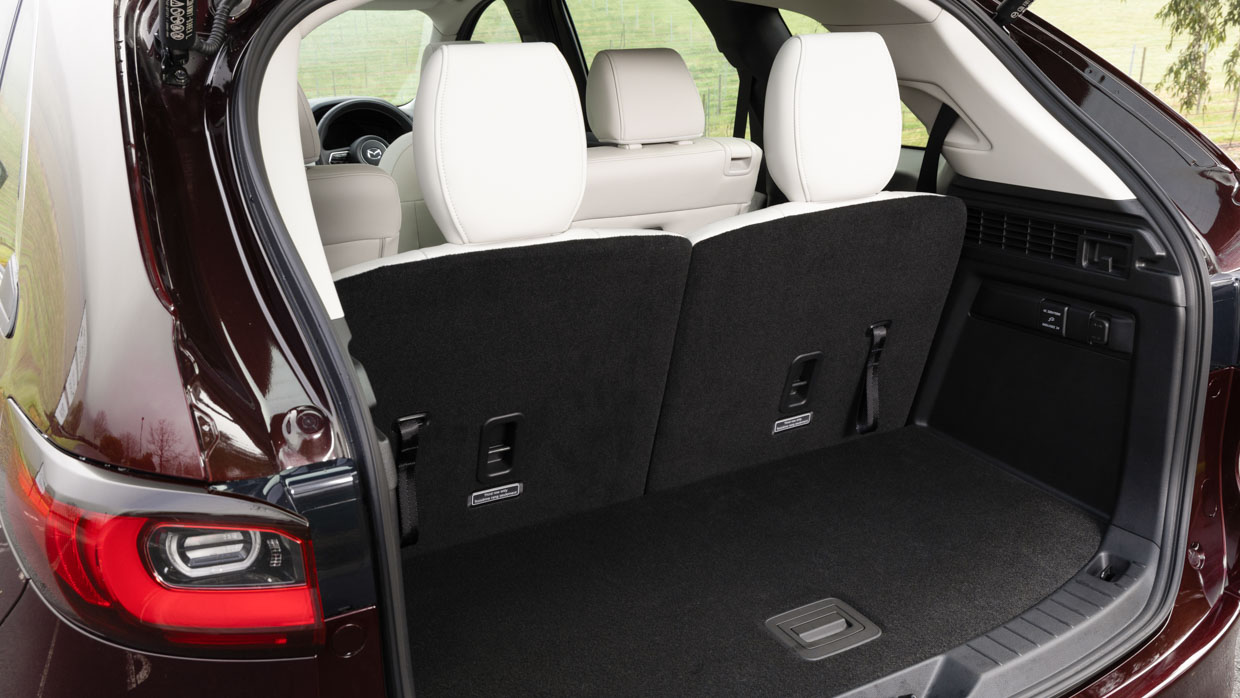
Space is abundant with a vast 608-litre boot (as a four- or five-seater) that expands to a whopping 2025 litres with all seats folded. Even with the third-row seating in place the remaining boot still measures about 275 litres, which is respectable.
Speaking of the third row, it’s also excellent. The CX-90’s slightly hump-backed (but pleasant) profile has resulted in segment leading headroom in the back seats.
Even with the captain’s chairs optioned, it’s easy to get in and out, although we would have loved to see a removable centre console which would really open up the rear seats for a genuinely comfortable experience for up to six people.

Technology is very well represented in all versions of the CX-90 and the top-spec car gets an impressive digital display with 12.3-inch screens for both driver and infotainment.
Unlike some Mazdas of the past, the main information and entertainment screen is not touch-sensitive when the vehicle is parked, with all functions accessed via the BMW iDrive-style dial and hot buttons.
While the resolution is good, some might not warm to the somewhat basic graphics which appear to be one of Mazda’s smaller screens enlarged by a few percent.
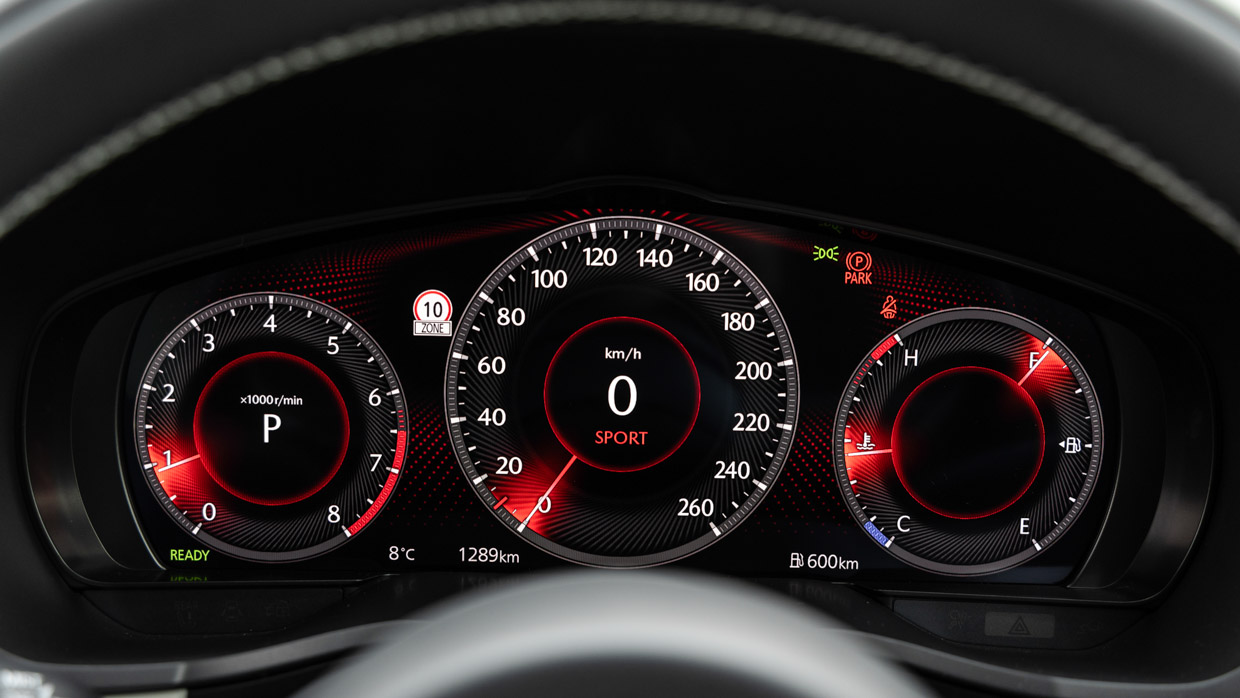
The full digital instrument cluster is certainly the pick for its customisable graphics and high-tech feel although the standard gauges offered in the entry Touring are separated by a 7.0-inch digital screen that is almost as useful if not quite as impressive.
Wireless smartphone mirroring is standard for all CX-90s, as is USB-C charging, a 220-volt power socket, wireless device charging, navigation, digital radio, a head-up display, and a space-saver spare wheel.
Cabin cubbies are generally pretty good although the centre storage bin in the centre console is disappointingly shallow to accommodate a second HVAC system for second-row passengers.
The Australasian New Car Assessment Program (ANCAP) has not yet tested the CX-90 and Mazda cannot confirm if the model will be submitted for evaluation.
All variants share the same features when it comes to the significant safety stuff: a 360-degree camera, LED headlights, 10 airbags, driver attention monitoring, lane keep assistance, AEB, front- and rear-cross traffic alert (this feature was very effective in practice), traffic sign recognition, tyre-pressure monitoring and Isofix child seat anchors are a few good standard features.
Only the Azami has adaptive cruise control that works down to stationary traffic but all get standard adaptive – but it’s not our favourite interpretation in practice. A previous test in a controlled scenario appeared to show the system tracking other vehicles accurately but in the wild, the technology is frustratingly inconsistent.
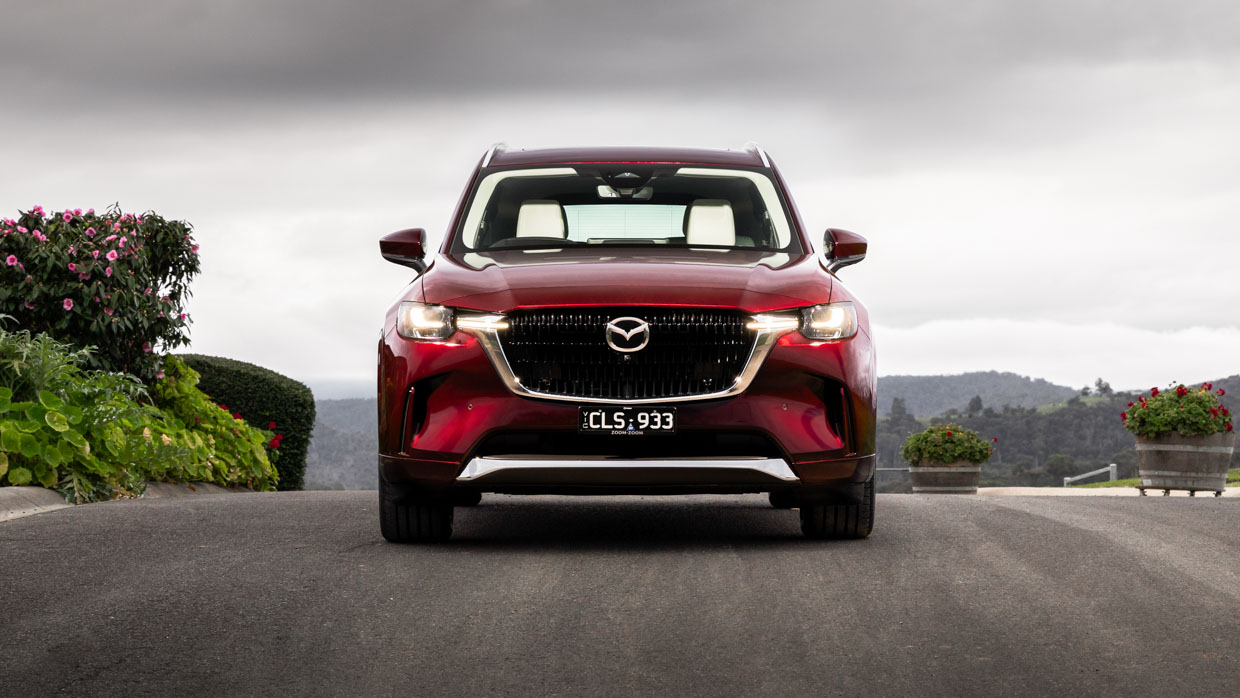
On freeways, the system locks on to not just the vehicles ahead in the same lane but frequently the vehicles in neighbouring lanes too. Under some circumstances this prevents the CX-90 from accelerating to the set speed and passing slower vehicles, while under other conditions the system brakes aggressively even when the lane ahead is clear.
There were one or two gremlins hiding in other active safety too, with the driver attention monitor shouting at our co-driver when it appeared unnecessary, while the hand-on-wheel warning repeatedly alerted during our drive despite both hands applied.
CX-90 servicing requirements differ depending on the drivetrain. D50e versions are the cheapest to maintain with the cost over five years totalling $3217 vs the $3390 it’ll cost to have the G50e maintained.
However, the diesel has shorter intervals of 10,000km compared with the 15,000km of the petrol, though terms are 12 months for both. The actual cost will therefore depend on how many kilometres you do each year.
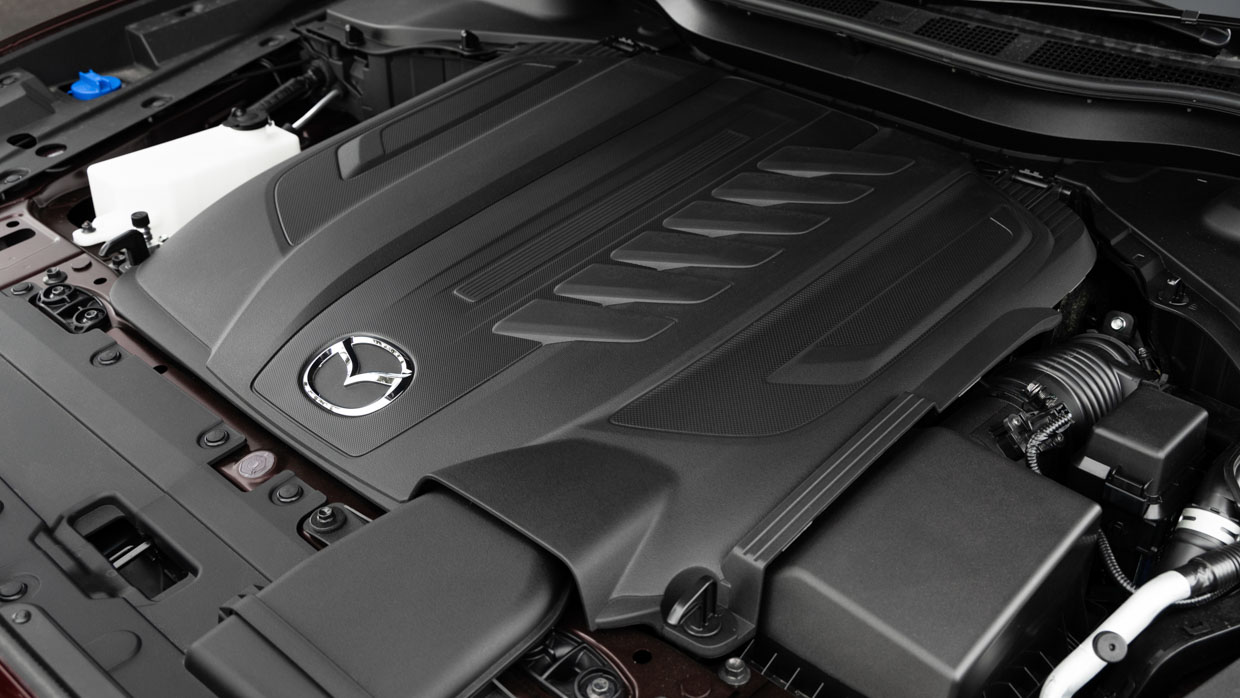
Mazda is quick to point out that the presence of the hybrid system is in the name of efficiency rather than necessarily to serve performance and this is certainly evident in the figures. Claims of 8.2 litres per 100km for the petrol and 5.4L/100km for diesel are impressive figures for a vehicle of this size and weight tier.
We managed to use a bit more than that given our more enthusiastic driving with 10.2L/100km and 7.8L/100km respectively. It’s worth bearing in mind that the G50e requires a minimum of 95RON, which will obviously impact the cost at the pump.
Mazda’s new flagship is an impressive large SUV that combines several strong attributes.
Powertrains are powerful, refined and efficient regardless of the fuel type, its space and practicality rate highly, while the quality standards and no-cost equipment are a successful rinse-and-repeat of other recent Mazda models.
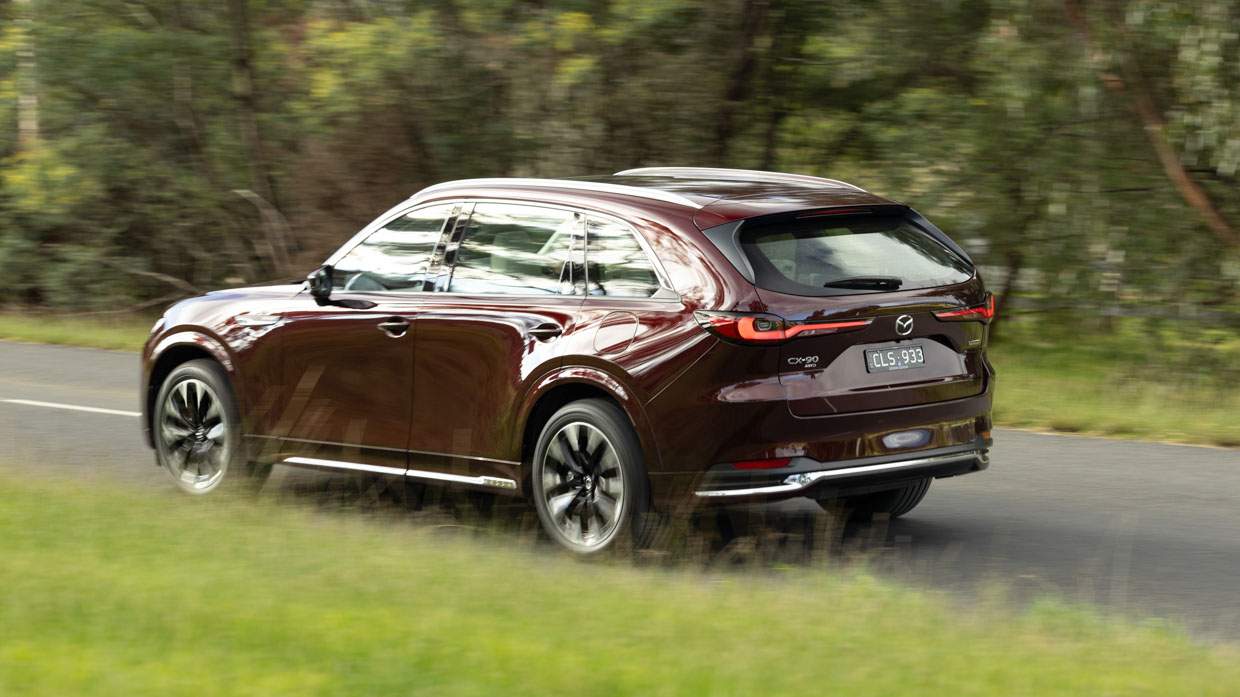
However, as the hero of the Japanese line-up, the CX-90 needs to go above and beyond, which it does to an extent and in some unexpected ways.
While we like the range-topping features, optioning up a range-topping Azami to look like the car in the adverts is an expensive indulgence, with a value curve that dives exponentially as the outlay increases.
Questionable ride quality doesn’t match the silky diesel and only makes a little more sense when paired with the petrol. In either case the result is expensive, especially when a tempting interior pack is thrown in at extra cost.
However, the more affordable variants pose a far better value proposition.
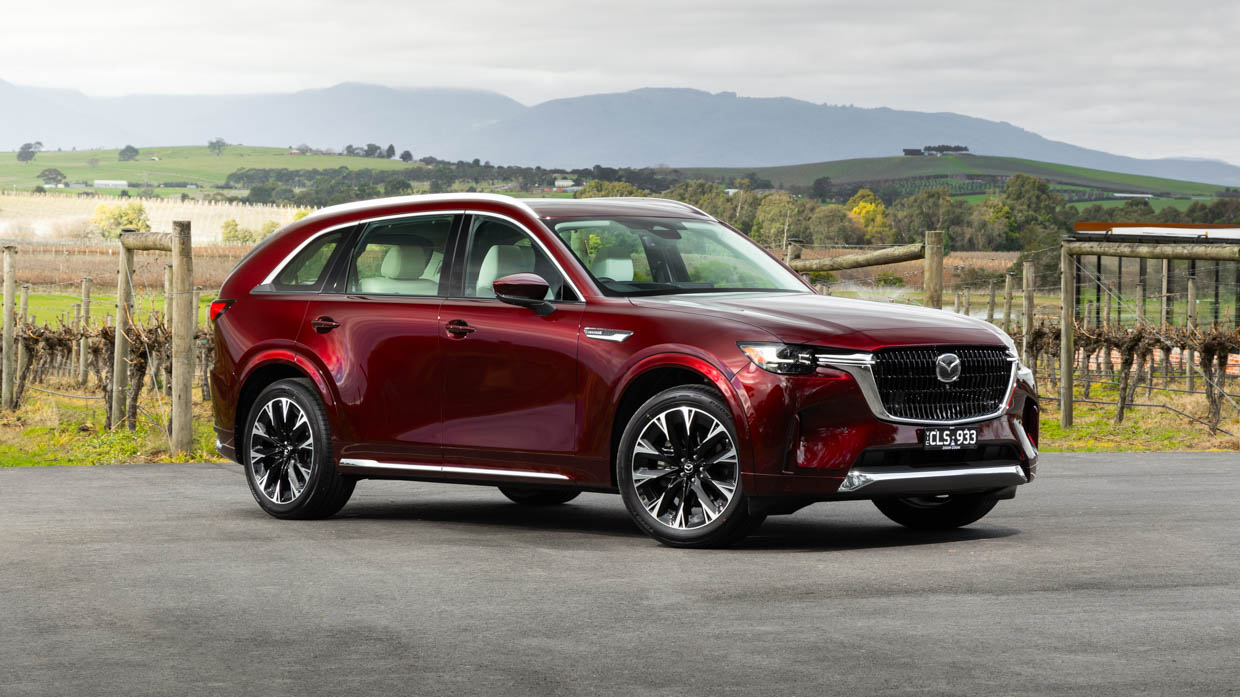
In the middle of the range, the GT gets most of the Azami’s impressive tech and design, but saves between $7740 and $9100, while the entry Touring is still well equipped, has the same excellent engines, rides on the most comfortable wheels and saves about $20,000 compared with the halo variants.
Dipping a toe into a new premium pool with Mazda’s matriarch requires a circa $100,000 spend and while opting for one of the more affordable versions might not elevate this particular model into German-worrying territory, less is definitely more when shopping in the CX-90 range.
Key specs (as tested)
About Chasing cars
Chasing Cars reviews are 100% independent.
Because we are powered by Budget Direct Insurance, we don’t receive advertising or sales revenue from car manufacturers.
We’re truly independent – giving you Australia’s best car reviews.
The estimate provided does not take into account your personal circumstances but is intended to give a general indication of the cost of insurance, in order to obtain a complete quote, please visit www.budgetdirect.com.au. Estimate includes 15%^ online discount.
^Conditions Apply
Budget Direct Insurance arranged by Auto & General Services Pty Ltd ACN 003 617 909(AGS) AFSL 241 411, for and on behalf of the insurer, Auto & General Insurance Company Limited(ABN 42 111 586 353, AFSL 285 571).Because we don’t know your financial needs, we can’t advise you if this insurance will suit you. You should consider your needs and the Product Disclosure Statement before making a decision to buy insurance. Terms and conditions apply.
Indicative quote based on assumptions including postcode , 40 year old male with no offences, licence suspensions or claims in the last 5 years, a NCD Rating 1 and no younger drivers listed. White car, driven up to 10,000kms a year, unfinanced, with no modifications, factory options and/or non-standard accessories, private use only and garaged at night.
^Online Discounts Terms & Conditions
1. Discounts apply to the premium paid for a new Budget Direct Gold Comprehensive Car Insurance, Third Party Property Only or Third Party Property, Fire & Theft Insurance policy initiated online on or after 29 March 2017. Discounts do not apply to optional Roadside Assistance.
2. Discounts do not apply to any renewal offer of insurance.
3. Discounts only apply to the insurance portion of the premium. Discounts are applied before government charges, taxes, levies and fees, including instalment processing fees (as applicable). The full extent of discounts may therefore be impacted.
4. We reserve the right to change the offer without notice.